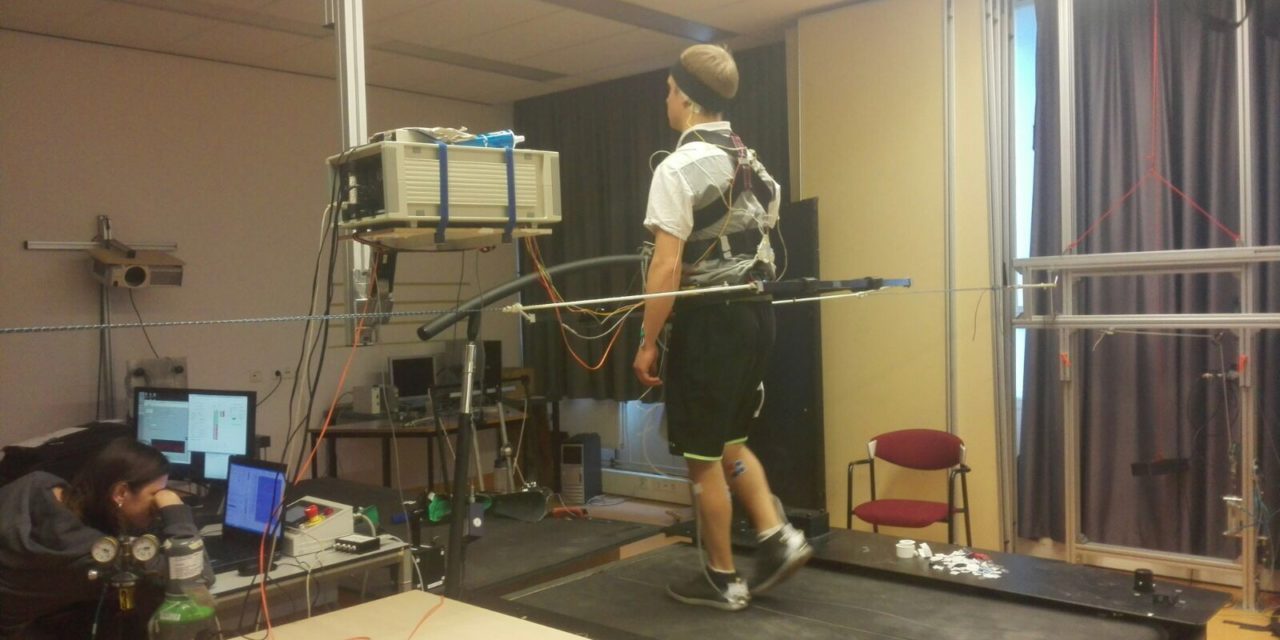Sensory information for control of gait stability
Bipedal locomotion requires active control in the frontal plane, which is accomplished mainly be adjusting foot placement based on the kinematics of the body center of mass (COM) in the preceding step. This however triggers the question how the brain can estimate COM kinematics from sensory information. We propose that a weighted combination of visual, vestibular and proprioceptive information is used. While manipulations of these three sources of information have shown effects on motor responses during walking that were phase-dependent and scaled according to the reliability of the inputs, the relevance of these responses for balance control remains unclear. Here we take the unique approach to quantify balance responses based on individualized models of balance control, with the COM kinematics during swing predicting the subsequent foot placement location during unperturbed gait. Adjustments of foot placement relative to the model predictions upon application of sensory manipulations quantify balance responses to sensory input. This will allow us to compare sensory weighting between standing and walking, between phases of the gait cycle and to study reweighting of the sensory modalities when one of the three is rendered unreliable.
Project Parameters
Launch Date: 2016
Related Research Themes & Projects

Energetics of Locomotion
Humans usually walk in a way that is energetically optimal. However, small changes to the gait pattern, such as alterations in arm swing, step length, or step width, change the metabolic energy required for walking. In this project we investigate how these small changes affect energetic cost of locomotion, and whether we can use these changes to understand how much energy is used for propulsion and maintaining stability.
